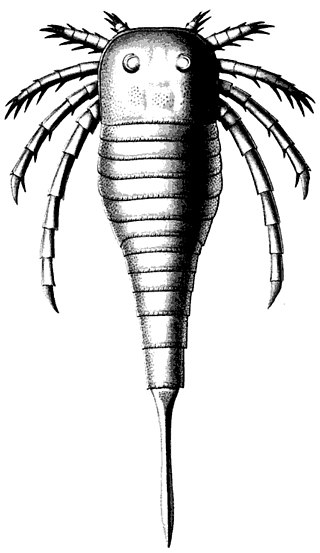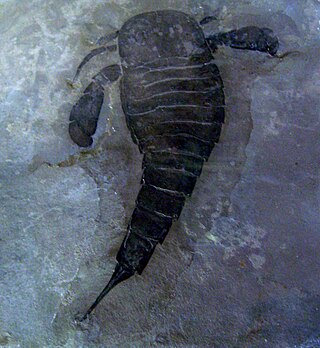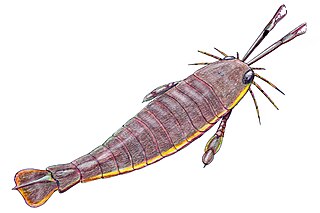
The Araneomorphae are an infraorder of spiders. They are distinguishable by chelicerae (fangs) that point diagonally forward and cross in a pinching action, in contrast to the Mygalomorphae, where they point straight down. Araneomorphs comprise the vast majority of living spiders.

Norman Ira Platnick was an American biological systematist and arachnologist. At the time of his death, he was a professor emeritus of the Richard Gilder Graduate School and Peter J. Solomon Family Curator Emeritus of the invertebrate zoology department of the American Museum of Natural History. A 1973 Ph.D. recipient at Harvard University, Platnick described over 1,800 species of spiders from around the world, making him the second most prolific spider taxonomist in history, behind only Eugène Simon. Until 2014 he was also the maintainer of the World Spider Catalog, a website formerly hosted by the AMNH which tracks the arachnology literature, and attempts to maintain a comprehensive list, sorted taxonomically, of every species of spider which has been formally described. In 2007 he received the International Society of Arachnology's Bonnet award, named for Pierre Bonnet, in recognition of his work on the catalog.

Prodidominae is a family of spider, sometimes called long-spinneret ground spiders. It was formerly regarded as a subfamily of Gnaphosidae, but was raised to a family in 2022.
The Halidae were a tiny spider family with only three described species in two genera. As of 2006, this family was no longer considered valid; the two genera are instead grouped in the family Pisauridae.

Kokomopterus is a genus of prehistoric eurypterid. The genus contains a single species, Kokomopterus longicaudatus, known from the Silurian of Kokomo, Indiana.

Erieopterus is a genus of prehistoric eurypterid found in Silurian to Devonian-aged marine strata of Europe and North America. The genus contains eight species from the Silurian to the Devonian, recovered from both North America and Europe.

Stylonurus is a genus of prehistoric eurypterid of the family Stylonuridae. The genus contains three species: Stylonurus powriensis from the Devonian of Scotland, Stylonurus shaffneri from the Devonian of Pennsylvania and Stylonurus perspicillum from the Devonian of Germany.

Hardieopterus is a genus of prehistoric eurypterid classified within the family Hardieopteridae. The genus contains four species, all Silurian in age; H. lanarkensis and H. macrophthalmus from Scotland, H. megalops from England and H. myops from the United States.

Laurieipterus is a genus of a eurypterid classified as part of the family Stylonuridae. It contains one species, L. elegans from the Early Silurian of Scotland.

Eurypteroidea are an extinct superfamily of eurypterids. It contains three families and two genera of uncertain classification, Paraeurypterus and Pentlandopterus.

Alireza Zamani is an Iranian arachnologist and taxonomist.
Speleoticus is a spider genus in the family Nesticidae. Its species are found in Japan and China.
Aituaria pontica is an araneomorph spider of the family Nesticidae. It occurs in the Krasnodar region of Russia and in Georgia.

Diploperculata is an infraorder of eurypterids, an extinct group of aquatic arthropods commonly known as "sea scorpions". The name, derived from Greek διπλόω ("double") and operculum, refers to the distinguishing feature that unites the superfamilies included in the group, that the genital operculum is made up of two fused segments.

Onychopterellidae are an extinct family of eurypterids. The family is the only family classified as part of the superfamily Onychopterelloidea. Genera included are Alkenopterus, Onychopterella and Tylopterella.

Moselopteridae are an extinct family of eurypterids. It is the only family classified as part of the superfamily Moselopteroidea, and contains three genera: Moselopterus, Stoermeropterus and Vinetopterus.

The Selenocosmiinae are a subfamily of tarantulas found throughout South-East Asia and Australia. This subfamily is defined by the presence of a lyra on the maxillae and strikers on the chelicerae, allowing these spiders to stridulate and produce a "hissing" sound. However some species within Phlogiellus may have secondary lost their lyra but retain their strikers. The monophyly of the subfamily has been only tested using genetic data with a handful of genera or species in a few studies. However, these studies found genera that had been previously placed in this subfamily were actual their own separate subfamily (Poecilotheria) and that Selenocosmiinae is most closely related to the Indian Thrigmopoeinae. As of 2021, Selenocosmiinae contains 11 genera.
Saphrys tehuelche is a species of jumping spider. The species was classified in the genus Euophrys from 1968, when it was first described by María Elena Galiano, until 2015. It can be found in Chile.
Yuri Mikhailovitch Marusik is a Russian arachnologist.

Trachycosmidae, is a family of spiders in the infraorder Araneomorphae.














